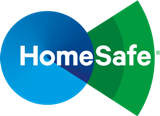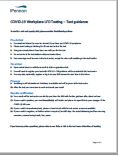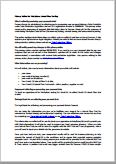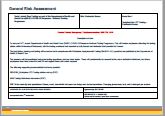Workplace testing
Did you know, around 1 in 3 people who have the virus have no symptoms and may be unkowingly spreading the virus? Lateral flow tests are good at detecting the virus in people who show no symptoms, enabling them to self-isolate and reduce the risk of spreading the virus.
Put simply, by taking a test you are helping to protect your colleagues and those you live with.
- Click here to decide which test to take
- Find out what lateral flow testing is here
- Order LFD Testing Kits from the Government Website via www.gov.uk/order-coronavirus-rapid-lateral-flow-tests
|
Book a test in your local area
|
Useful documents
|
|
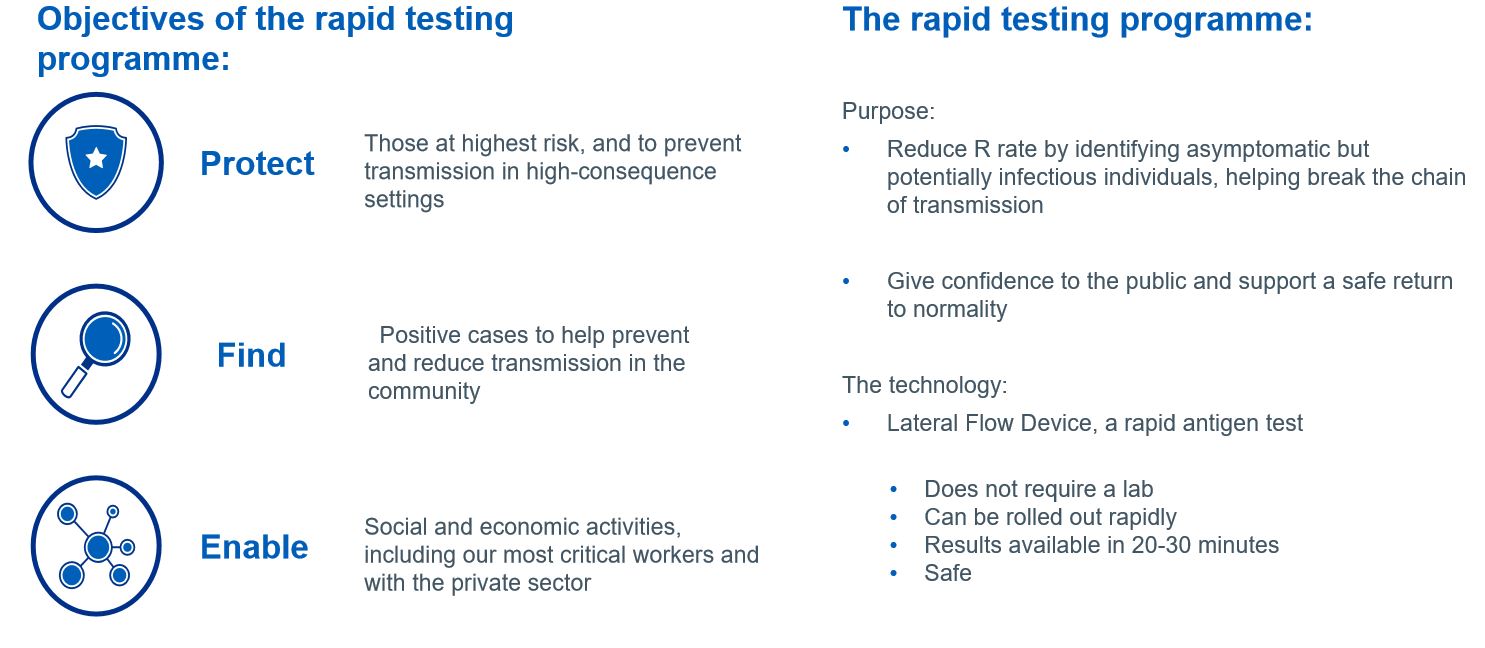
Workplace LFD Testing FAQs
Why are we doing this testing?
The testing programme is in place to further protect our employee’s risk of suffering with or transmitting COVID-19. The objective is to identify asymptomatic COVID-19 carriers and ensure their self-isolation to limit further spread in the workplace.
The UK Government Department of Health and Social Care (DHSC) are rolling out workplace testing programmes to large public and private organisations across the Country, of which all Water companies are included. This programme is lead by the DHSC and will be facilitated by Pennon designed to allow testing to as many people as possible and break chains of transmission.
What is an LFD test?
Lateral flow device (LFD) antigen tests are a new kind of technology that can be used to test a higher proportion of asymptomatic people (people without COVID-19 symptoms), better enabling identification and isolation those who are have a higher likelihood of spreading the virus.
An LFD test is known as a rapid test as it does not require lab analysis to identify a result, instead it is available after 30 minutes.
Who should be tested?
We would encourage any member of staff working on the site where a test facility is available to book a test.
You can have up to two tests a week if on the site for the whole week or one if attending work less frequent.
Tests should be booked as a spread of your weekly shift/working pattern, 2-4 days apart, meaning it doesn’t always have to be on Monday morning! Testing is designed to be a point in time snapshot as opposed to an ok to start work.
How long do the results take to come through?
After your test you can commence/continue your role as usual. You will be automatically notified by text or email of the result usually within an hour of your test.
What will I have to do if I get a positive result?
If you test positive with the rapid lateral flow test you will need to immediately self-isolate following the latest Government guidelines. As the false positive rate in LFD testing is so low (0.3%) – due to the tests being conducted under a controlled environment and supervised by trained staff; a PCR (full lab test) to confirm the result is not required. Not the case for other private LFD tests.
If you receive a positive test result you will need to immediately isolate and inform your line manager via phone (not in person). You will be able to discuss any homeworking tasks (if possible) able to be done while in self-isolation with your manager.
How often should I get tested?
Tests are encouraged to be booked and taken 2-4 days apart. So, if you are in the workplace full-time, two LFD tests a week is appropriate.
If you in the workplace less often follow this same model, a workplace LFD test 2-4 days apart. For example, if you on site on Monday and Tuesday; one test on either day is recommended. If you are on site Monday and Thursday, you could book a test on each day – as these days are between 2-4 days apart.
How does the LFD test work?
Lateral flow is an established technology, adapted to detect proteins (antigens) that are present when a person has COVID-19. The best-known example of a lateral flow test is the home pregnancy test kit.
The test kit is a hand-held device with an absorbent pad at one end and a reading window at the other. Inside the device is a strip of test paper that changes colour in the presence of COVID-19 proteins (antigens).
Test results

Negative result: one line next to C shows the test is negative.
Positive result: two lines, one next to C and one next to T, even faint lines, shows the test is positive. We will report this test result to the NHS.
Void: no lines, or one line next to T, means the test is void. You will need to re-take with a fresh test kit.
If you get a positive result you must self-isolate immediately, preventing further transmission of the virus.
A negative result means that active coronavirus infection was not detected, at the time of the test. However, this does not guarantee that you do not have coronavirus. You should continue to follow coronavirus rules, including regular hand washing, social distancing and face coverings where required.
What do I do if the result is negative?
If you receive a negative result, there is no change to make. You must continue to follow the preventative measures, guidelines and social distancing. To protect yourself and others, you must remember: Hands. Face. Space.
- Hands – wash your hands for 20 seconds with soap and water often, and as soon as you get home – use hand sanitiser gel if soap and water are not available.
- Face – wear a face covering in indoor settings where social distancing may be difficult, and where you will come into
contact with people you do not normally meet. - Space – stay at least 2 metres away from anyone you do not live with, or who is not in your support bubble.
How is my data stored?
Data is stored securely online in accordance to GDPR protocols. The information stored will not be shared wider than is required for public health reasons and anonymised monthly. The following data is recorded:
- Your name
- Contact details (as per your corporate Outlook record)
- Test/barcode reference number (assigned on test arrival)
- Test date & time
- Test result (positive, negative or void/inconclusive)
Who will be privy to my results data?
Within the organisation, only the Occupational Health Nurses and testing operatives will be privy to all the data for potential local track and trace reasons. A Data Protection Impact Assessment (DPIA) has taken place. The COVID-19 Management team will receive anonymised reports (number of tests positive, negative etc) which cannot be linked to individuals. This is used for monitoring and policy development.
Public Health England (and its counterparts) will receive anonymised data from the National Pathogen Exchange which receives information from your GOV.UK registration of the test.
How accurate are the tests?
Lateral flow device (LFD) and the Polymerase Chain Reaction (PCR) tests have different characteristics and different uses.
PCR tests have higher specificity and sensitivity but require a laboratory to process results and are therefore slower and more expensive. They are therefore well suited to specific use cases, such as those with COVID-19 symptoms.
While lateral flow tests have lower sensitivity than PCR, they deliver results far faster and do not require a lab, making them more scalable.
As such, they allow us to test far larger numbers of asymptomatic people and get them their test result faster than with PCR technology.
This will enable us to identify a large percentage of people who are infected and infectious, but asymptomatic and unaware of the fact that they are possibly spreading COVID-19.
The test cannot detect very low levels of coronavirus in a sample, so if you have only recently been infected, are in the incubation period, or if you have mostly recovered, the test may not give a positive result.
What happens if the test result is void or inconclusive?
Void results, if conducted correctly, are rare. If the LFD test is void, a second LFD test should be done ASAP. If the second LFD test is void, in this unlikely circumstance, then a PCR test should be arranged straight away by booking a NHS test online or do so by calling 119.
How is the test taken?
Taking a lateral flow test usually involves taking a sample from the back of the throat near the tonsils and from the nose, using a swab.
The swab is dipped into an extraction solution. This is then dripped on to the device's paper pad, producing the reaction that gives the result in the form of colour lines indicating a positive or negative result.
You will swab yourself under the supervision of a trained operator who then processes the test and reads the result.
It takes approximately 10 minutes to administer the test and because lateral flow devices do not need to be sent to a lab, results are usually available after 30 minutes.
You will be sent the result of the test within an hour by email or text and followed up by the COVID-19 team if necessary.
What do I do when I arrive at the test site?
To avoid unnecessary congestion; please do not arrive for your test until your booked time slot.
On arrival please enter the test area and wait to be called forward by the coordinator where you will be checked in and your contact details confirmed with those provided on booking. You will need to register the test with GOV.UK (of which details will be provided on arrival). You will be given a barcode (test reference) and a registration card.
After checking in and registering, you will be directed to a test booth where there will be direction on collecting a sample. A trained member of the testing team will be on hand to guide you through taking the sample from the swab.
After this your test is complete and you can exit the test site and proceed back to work. You will be informed of the result by email or text message within an hour from the NHS.
Do contractors or visitors to site need to be tested?
The workplace testing programme is being established for the benefit of employees which remains the focus of the programme currently.
It may be the case that the programme is expanded to include contractors and visitors in future, but this is currently not applicable at this time.
All contractors and essential visitors to sites should continue to practice COVID safe guidance and adhere to the measures in place.
Where else is doing these types of tests?
We are participating in the Workplace LFD testing programme as prescribed by the Department of Health and Social Care (DHSC) as an employer with over 50 staff based at one site.
Some of the UK’s Largest organisations are already participating in the workplace testing programme where over ¾ of a million LFD tests have been completed (to the end of January 2021); organisations including: Jaguar Land Rover, John Lewis Partnership, Royal Mail, Tate & Lyle Sugars, Octopus Energy, Apetito, DVLA and various Government departments.
All Water companies, as essential working organisations, are being encouraged to take part in the scheme as it is rolled out wider to more and more organisations.
Case study: Transport for London (TfL) have in place 4 asymptomatic testing sites and as of 29 January 2021, staff have conducted over 2,000 tests, identifying 28 positive cases that would have otherwise continued working alongside colleagues and potentially spreading COVID-19 with more severe consequences than 28 staff self-isolating.
Case study: Northumbria Water completed 2,000 tests across their business and up to 12 February, have resulted in just one positive case.
Why are we only testing people twice a week?
The Workplace LFD testing programme is prescribed by the Department of Health and Social Care (DHSC) and testing kits are funded by the NHS. Studies suggest asymptomatic carriers are most infectious for a period of 3-5 days during carrying the virus. Testing twice in a 7-day period would identify this.
To make the programme most effective and gain reach across multiple locations and organisations, a twice-weekly test frequency is been prescribed. To follow the programme, we will not have enough capacity or enough testing kits to do more frequently.
However, the Workplace LFD testing programme is only one strand of our COVID-19 asymptomatic testing strategy:
Community testing: For employees who need to leave their homes to work but are not based at a site where we are undertaking workplace testing. Local Authorities in the area are running Community testing programmes designed for key workers.
Private testing: For individuals where you have been identified as vulnerable but still need to leave your home to work or particular roles where a loss of resource would have a significant impact to the business operations. The frequency of testing using these private tests is within our control (subject to availability).
How else can I be tested?
The Workplace LFD testing programme is only one strand of our COVID-19 asymptomatic testing strategy:
Community testing: For employees who need to leave their homes to work but are not based at a site where we are undertaking workplace testing. Local Authorities in the area are running Community testing programmes designed for key workers.
Private testing: For individuals where you have been identified as vulnerable but still need to leave your home to work or particular roles where a loss of resource would have a significant impact to the business operations. The frequency of testing using these private tests is within our control (subject to availability).
What if I have previously been tested positive; how can this affect testing? Should I continue to get tested?
If you have tested positive by PCR for COVID-19, you will probably have developed some immunity to the disease. However, it cannot be guaranteed that everyone will develop immunity, or how long it will last. It is possible for PCR tests to remain positive for some time after COVID-19 infection.
Anyone who has previously received a positive COVID-19 PCR test result should not be re-tested within 90 days of that test (including through workplace testing), unless they develop any new symptoms of COVID-19.
After 90 days, you are encouraged to receive LFD workplace testing if you are back in the workplace and asymptomatic. If the result of any future test is positive, you and your household should self-isolate again; following the Government guidelines.
What volumes of workplace tests do we expect to do?
Pennon/SWW has c2,000 employees. A large proportion of the essential workers out in the field will be eligible and recommended to book into having a twice-weekly LFD test in their local Community testing centre run by their Local Authority.
For other staff based in the high-volume bases with critical company functions; Peninsula Park (including the Source Contact Centre and Company Control Room) and Countess Wear (including Laboratories), we initially expect c200 staff per week requiring tests – up to c400 tests a week. This will be spread across the week and both sites with resource capacity covered for up to 96 tests a day. There is potential to scale this capacity if required with additional resources.
Our COVID-19 testing strategy includes additional capacity and option for private testing of key roles and vulnerable individuals more frequent, if deployed.
Do I still need to be tested if I’ve had the vaccine?
Like all medicines, no vaccine is completely effective – some people may still get COVID-19 despite having a vaccination, but this should be less severe. It is not yet known whether it will stop you from catching and passing on the virus.
Given this we would still encourage you to continue to be tested if in the workplace.
Won’t doing more testing increase the chances of a false positive result and cause self-isolation unnecessarily?
It’s most important to remember that the testing is being completed to detect COVID-19 cases that otherwise might not have been traced and breaking the chain of transmission. There may be far worse consequences further down the line if this wasn’t identified.
The LFD tests are less accurate than full lab PCR tests but designed to give a rapid result benefit allowing it to be deployed wider.
As the false positive rate in Workplace LFD testing is low (0.3%) due to the tests being conducted under a controlled environment and supervised by trained staff; a PCR (full lab test) to confirm the result is not required. Not the case for other private LFD tests.
